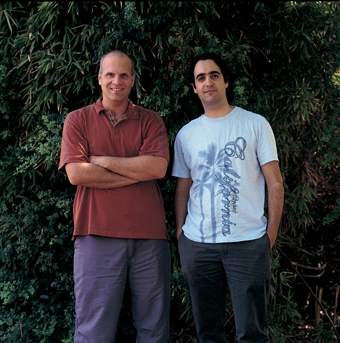
Tension between opposites is one of the pillars of human culture – from the evil counterparts of the good and all-powerful God in Western religions to Through the Looking Glass, in which Alice enters a world that is the exact opposite of the one in which we live.
The natural world is filled with opposing pairs: molecular “twins” that are identical in composition but oriented in diametrically opposite directions, like left and right hands, or elementary anti-matter particles that equal their matter counterparts in everything except their opposite charge. Still, Prof. Dan Shahar of the Condensed Matter Physics Department was surprised to discover a duality phenomenon that no one had observed before.
Shahar studies superconductivity, which takes place when a conductor – a metal or a ceramic material – is cooled to an extremely low temperature, such that its resistance drops to zero. When a material loses all its resistance, it allows electrical current to flow forever without charging it any “commission.”
Superconductivity occurs only at certain temperatures and when the material is somewhat orderly. One intriguing phenomenon takes place when a conductor becomes a superconductor – a relatively more orderly state – and later loses its superconducting ability, for example, due to heating. In this case, the material doesn’t return to its conductor state; rather, it becomes an insulator! This phenomenon is observed only when the disorder in the original conductor exceeds a certain level.
Shahar and his team decided to deprive a material of its superconducting ability in a different way: by activating a strong magnetic field. They created a superconductor from a material that was relatively disordered – though not disordered enough to cause the superconductor to turn into an insulator by heating – and placed it into a strong magnetic field. Next, they tested the current flowing through the material while gradually altering the strength of the magnetic field and the temperature. Much to their surprise, they discovered that at the point the material ceased being a superconductor, it became neither a regular conductor nor a regular insulator. Instead, the material entirely lost its ability to conduct any electrical current whatsoever. Shahar’s team, for the first time ever, was observing a superinsulator – the exact opposite of a superconductor.
The scientists still don’t understand superinsulation, which in the meantime has been discovered in a number of materials and observed in research institutions in other countries. This phenomenon might be connected to the fact that strong magnetic fields create a sort of a “magnetic whirlpool.” Theoretical physicists have proposed treating these whirlpools as particles, which in certain conditions respond to the current by generating great tension that results in superinsulation.
Whatever the explanation, much remains to be discovered in this area of research. Superinsulation today takes place at temperatures of 40 thousandths of a degree above absolute zero. If scientists one day succeed in creating superinsulators at room temperature, such materials could solve the problem of overheating in electronic components, making it possible to build transistors that don’t lose current and vastly increasing the durability of batteries.
